MASTER IN BUSINESS ADMINISTRATION
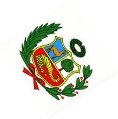
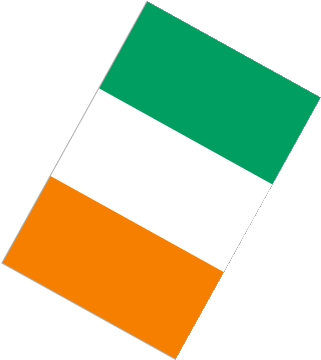
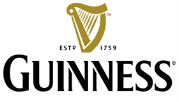

The following assignment is aimed at evaluating the attractiveness of Peru market as a potential entry market for the Irish Company, Guinness Breweries.
Using the method of International Market Selection market will asses under the Systematic Approach and the model called Analytic Hierarchy Process (AHP), we will weigh the three main criteria: Economic, Politics and Cultural.
Based on the result from the analysis we will recommend the company either the market is attractiveness or not for the company to entry.
Guinness was founded in Dublin in 1759. It was first brewed by Arthur Guinness. This was a fairly new beer, characterised by its dark colour acquired through the roasted barley used in its brewing process.
Within 10 years, Guinness Extra Strong Porter was being exported to England. It became known as Guinness Stout as a strong porter was known as a stout porter. By the nineteenth century, Guinness focused its brewing activities on stout alone Expansion into foreign markets was spearheaded under the guidance of Arthur’s three sons who succeeded him in the family business.
From the end of the 1920s onwards, Guinness moved into advertising, with the placing of adverts in the press and the roll-out of a poster campaign. In accordance with an increase in demand for the Guinness product, a new brewery was established at Park Royal, London in 1936, which became Arthur Guinness Sons & Co (Park Royal) in 1952.
The pinnacle of Guinness’ extensive research came in the form of Draught Guinness in cans, launched in the UK in 1989 which, with the inclusion of the award-winning Guinness widget, typified the company’s pioneering approach to improving technology and replicating the taste of Draught Guinness in a can
Guinness Limited now has breweries in 51 countries worldwide and Guinness stout is drunk in 150 countries Over 10 million glasses of Guinness stout are drunk every day worldwide.
Starting business operations abroad is a complex and complicated process. It requires decisions about many related but separate issues. The consequences of these decisions may have a significant influence on the success and performance of a firm.
The recognition of “right” International market is one of the most important decisions that organizations face today when interesting in international trade. Regardless of its importance, the tactics pondered by many organizations in ascertaining profitable and servable markets in the international context are often based on the ad hoc decisions and view, rather than a formalized endeavor to match the organization’s competences to that of the relevant foreign target markets.
Get Help With Your Essay
If you need assistance with writing your essay, our professional essay writing service is here to help!
After a company have determined to go international, it will stand before the choice of Selecting a target market (European Commission, 2014). According to Marchi et al. (2014) the international market selection (IMS) is an important determinant for a firm’s success on international markets. The International Markets Selection is a vital issue in the classification of foreign entry strategy (Papadopoulos et al., 2002). IMS is defined the development of competent and effective methods for selecting a foreign target market(s.) Denis and Papadopoulos (1988).
Two diverse, traditional, approaches to the international markets selection have been presented (Papadopoulos and Denis, 1988): (1) A systematic approach, using a formalized decision process including a variety of statistical methods to analyze the potential of target markets; (2) an unsystematic approach suggesting the use of rules of thum such as selection of those foreign markets that reduce the received psychic distance.
Company go global for a variety of reason, but the typical objective is company expansion. Bradley (2005:2) has many reasons for internationalization and some examples of those are; better opportunities abroad, shortening product and technology lifecycles, excess capacity and desire to fallow consumers and competitors abroad.
Guinness Brewery, want to continue its global expansion in Peru (South America). Guinness Company has been successes in 51 countries worldwide. For example in Nigeria Guinness Nigeria has been success 1963, that first came to Nigeria
When a company seeks to expand its business to foreign markets, a number of tactical decisions must be evaluated (Górecka and Szalucka, 2013) Also, the company has to decide the timing of entry (when) as well as entry mode (how) (Górecka and Szalucka, 2013)
Evaluation Criteria
Inflation
Peru has been one of the region’s fastest-growing economies in the last decade, with an average growth rate 5.9 percent in a context of low inflation (averaging 2.9 percent). A positive external environment, prudent macroeconomic policies and structural reforms in different areas combined to create a scenario of high growth and low inflation. After reaching a maximum of 4.6 percent at the beginning of the year, headline inflation has declined and stood at 2.9 percent in August 2016, just lower the upper limit of its target range.
GDP growth
Slightly improved to 3.3 percent in 2015, with a 6-year minimum of 2.4 percent in 2014. In 2016, economic growth is expected to be similar to 2015 levels, increasingly recovering to an average rate of 3.8 percent by 2017-2018. Over the next two or three years, large-scale mining projects are expected to begin fabrication and increased private and public investment in infrastructure projects will support aggregate demand. Additionally, the country will continue to implement structural reforms to ensure confidence of private investors.
Exchange rate:
Peru has a free-floating exchange rate regime, with the government irregularly intervening for purposes of stabilization. As of the end of 2013, the Nuevo Sol is one of the least volatile currencies in the world, exhibiting firmness in the face of international market and currency fluctuations. The Central Reserve Bank of Peru (BCRP) implements fiscal stimulus and liquidity control measures.
Political
Stability
The economy’s overall stable and strong performance has allowed the government to increase its revenues and, hence, to balance the budget. President Pedro Pablo Kuczynski, who took office in July 2016, intends to increase public investment in infrastructure and has announced that Peru is expected to raise funds on worldwide financial markets to finance these projects.
Since 1998 when the country hardly avoided bankruptcy by signing an agreement with the IMF, Peru has followed a safe path of fiscal consolidation. The fiscal balance has registered only four years of deficit in the last decade and those deficits have never been larger than 1.3% of GDP. Additionally, public debt was cut about in half, from the 44.3% of GDP tallied in 2004 to just 23.3% of GDP in 2015.
Market Economy
A market economy is based on the values of offer and demand, and lets business carry on or fail devoid of much interaction from the government. A pure market economy is not viable to implement, most market economies in the region of the world have a component of government influence
Existing reforms dismantled some barriers to running private enterprises. With no minimum capital necessary, it now takes less than seven procedures to start a business. Labour regulations are evolving. The state controls domestic food and fuel prices and partly subsidizes electricity, but in late 2014, it ruled out cutting taxes or introducing subsidies to support investment and cushion export sectors from the ongoing recession in product prices.
Culture
Peruvians preserve a strong sense of nationality identity supported by a series of general characteristics such as language. Hofstede model is used to assess the attractiveness of the market. Of the six dimension between Ireland and Peru compare.
Both country have similarity only in Long term orientation and the score is very low, at Ireland 24 and Peru 25, meaning that this dimension measures the long term official planning does not exist. They differ culturally in the others five dimensions, such as Distance Power, Individualism, masculinity, uncertainty avoidance, indulgence.
Evaluating the three main criteria: economic, political and cultural; and based on the information provided for each of them, we rank them as fallow the political as the most important. Fallow by economic as a less important, Since, Economic and political are extremely interrelated. On the one hand, the indecision connected with an unstable political environment may decrease investment and the pace of economic advance. On the other hand, poor economic performance may lead to government collapse and political unrest.
When analyzing the Incentives parameter for the Peru market, we found out several macro greenfield factors that could act as enablers for Guinnes beer approval. These include both political (such as government ) as well economic factors (GDP increasing year by year) Based on the analysis using our constructed IMS model, we believe that the Peru market has several favorable conditions for
Analyzing Sub Criterias
According to the above information about each sub criteria of Economy criteria, we could rank the most important sub crateria is Inflation. This It is more important compare to exchange rate. If inflation increases, it means the value of the money loose power, therefore, the exchange rate increase. Moreover, countries with lower inflation have a tendency to see an appreciation in the value of their currency.
GDP growth is not a very important sub-criteria, even though it not an important sub criteria it is increasing year by year. Exchange rate is more important than GDP growth, the latter of which is adjusted for inflation. If the inflation is lower, then the country will be more competitive.
In the potential entry market which is Peru Market, inflation is very low, (averaging 2.9 percent), then the country is more attractive as a prospective market to entry.
In the Political criteria; the most important sub-criteria is Stability, fallows by Regulation and, last one Market Economic. Political stability is a pillar of a democracy. For an investor it is important to have a minimum of security regarding the political stability of the country where to invest, a climate of political instability may affect the ability of a region or country to attract investment.
Peru, is a very stable politically country, The constitution of Peru states that presidents cannot be re-elected. The constitution decrees a traditionally elected president and vice president serve five-year term.
The president selects the prime minister who presides over the rest of the ministers, who comprise the cabinet. If a country is stable politically, hence, its regulation continues implementing structural reforms to guarantee confidence of private investors.
Regarding to Culture similarity, both Ireland and Peru are different culturally. But it does not mean that Peru market could not be a potential entry market for an Irish company. Culture similarity is not an important sub criterion in this case that will interfere in the decision of in a international market. Furthermore, Ireland is doing business with South American country, such as Chile. Evaluating the Hofstede for Ireland and Chile culture similarity, the result is that they both are totally different respect to this sub criteria, however, their business are well performing.
Between January and August of this year, the volume of Peruvian beer imports grew by 35% over the same period last year, according to the Foreign Trade Center (CCEX) of the Chamber of Commerce of Lima.
Between 2012-2016 imports of this product have registered a decrease in volume of 1.4 million liters, but with this growth is generating a great expectation regarding the recovery of consumption of this product, “said Carlos Garcia, manager of CCEX-CCL.
In the first eight months of the year, the value added totaled more than US $ 5 million, entering our country 5.6 million liters of beer.
Among the main suppliers we find Mexico, which covers 58% of the share, being the main supplier of Corona beer; Followed by Colombia (18%) that provides us with all Miller beer.
Below these countries we find the Netherlands with a 9% share, a country that supplies us with Heineken and Grolsch beers. Meanwhile, Germany provides us with the Erdinger Weissbier, Bear Beer, Oettinger, Bitburger, Classe Royale and Phoenix brands; While Argentina supplies us with Stella Artois and Quilmes and Japan beers from the Sapporo and Kirin Ichiban beers
As a result of the Analysis for a potential entry market based on the method of International Markets Selection at Evaluating the attractiveness of Peru market as a potential entry market for the Irish Company ¨Guinness breweries ¨.
Under the Systematic Approach and the model called Analytic Hierarchy Process (AHP), we will weigh the three main criteria: Economic, Politics and Cultural.
Peru, is one of the countries in Latino America that the economy is growing faster year by year. The inflation is at very low el The main Criteria and the most important por a decision maker about neither entre or not is POLITICAL,
The Government of Peru has encouraged integration with the global economy by signing 17 free trade agreements with 52 economies, including the United States-Peru Trade Promotion Agreement (while U.S. exports to Peru jumped from USD 4.9 billion to USD 8.8 billion (a 79 % increase). In 2015, exports grew 23.5% while imports declined 10.9%. Peru registered a USD 13 million trade surplus in April 2016, the first of the year. Peru’s preferentiaPTPA), which entered into force in February 2009.
Trade agreements are with Argentina, Brazil, Bolivia, Chile, China, Colombia, Ecuador, the European Union, Iceland, Japan, South Korea, Lichtenstein, Mexico, Norway, Panama, Paraguay, Singapore, Switzerland, Thailand, the United States, and Uruguay.
From result Pairwise comparisons we got them from the weight the Main and Sub criteria 77%, what mean that Peru Market is attractiveness to entry (70 -79 not so favourable, but still an advanced economy)
References
http://www.burkedist.com/all-products/imported-beers/guiness#, Burke Distributione (accessed 08-01-17 )
http://blogs.worldbank.org/endpovertyinsouthasia/can-political-stability-hurt- conomic-growth. The word bank (accessed 09-01-2017)
http://www.heritage.org/index/country/peru ,Economic freedom, ( Accessed 08-01-2017)
http://www.limaeasy.com/peruvian-money-currency-guide/current-exchange-rates Lima Easy, the lima guide, (Accessed 08-01-2017)
http://www.worldbank.org/en/country/peru/overview, THE WORDL BANK, IBRD-IDA, (ACCESSED 03-01-2017)
http://www.bandeiragalega.com/es/celt/irlanda.htm, Bandeira Galaga (Accessed 08-01-2017)
http://www.tradingeconomics.com/peru/forecast, Trading Economy, (accessed 08-01-2017)
http://www.focus-economics.com/countries/peru, Focus Economic, (ACCESSED 03-01-17) http://www.doingbusiness.org/data/exploreeconomies/peru/. Accessed 04-01-2017
http://www.celticclothing.com/mm5/irish-american/cc07-01-history-of-guinness-brewing.php. Celyic Clothing, (06-01-2017)
http://www.worldbank.org/en/country/peru/overview, The word Bank, 2017. (accessed 05-01-2017)
http://www.tandfonline.com/doi/ref/10.1080/10978526.2016.1142376, Latin America Business Review. (Accessed 05-01-2017)
http://www.tdx.cat/bitstream/handle/10803/108138/Tpcs1de1.pdf.txt?sequence=3, (Accessed 05-01-2017)
https://www.coursehero.com/file/p6hqcci/Johanson-J-and-Vahlne-J-E-1977-The-internationalization-process-of-the-firm-a/, Curse Hero, 2017, (Accessed 07-01-2017)
https://www.scribd.com/doc/296034867/Global-Operations-Strategy-Fundamentals-and-Practice-pdf, Scrib, (Accessed 07-01-2017)
http://docplayer.net/11655757-International-market-selection-screening-technique.html, DcPlayer,2016 (01.01.2017 )
https://www.coursehero.com/file/p13rno6u/Irregular-payments-bribes-and-the-favoritism-of-government-officials-are-all/, Curse Hero, 2017. (08-01-2017)
http://www.foctraditional us-economics.com/countries/peru, Focus Economic. 2017 (08-01-2017)
http://cultural-traditions.blogspot.ie/2009/11/culture-of-peru.html, cultural Tradion Of Peru, Nov. 16, 2009. (08-01-2017)
https://www.export.gov/article?id=Peru-Market-Overview, Expor.Gov, (Accessed 01-07-2017)
https://www.researchgate.net/publication/249643551_The_decision_process_for_the_International_Market_Selection, Reasercg Gate, Oct.17, 2016 (accessed 01-08-2017)
Alegría, Ciro. The World Is Broad and Alien, 1973.
Americas Watch. Untold Terror: Violence against Women in Peru’s Armed Conflict, 1992.
Andersen, O. and Buvik, A. (2002) ‘Firms’ internationalization and alternative approaches to the international customer/market selection’, International Business Review 11(3), pp. 347- 63
Arguedas, José María. Deep Rivers , 1978.
Brown, Michael, and Eduardo Fernández. War of Shadows: The Struggle for Utopia in the Peruvian Amazon, 1991.
Bradley, F. (2005) International Marketing Strategy 8 th edition Prentice Hall, London
Bryce Echenique, A. A World for Julius, 1992.
Brewer P., (2001), International market selection: developing a model from
Australian case studies, International Business Review, vol. 10, pp. 155-174
Brouthers, L. Nakos, G. (2005), “The role of systematic international market selection on small firms’ export performance” Journal of Small Business
Management Oct2005, Vol. 43 Issue 4, p363-19p.
Cavusgil, S.T. (1985) ‘Guidelines for export market research’, Business Horizons. 28(6), pp. 27- 33.
Denis, J.E. and Papadopoulos, N. (1988) ‘INVENTORY, TAXONOMY AND ASSESSMENT OF METHODS FOR INTERNATIONAL MARKET SELECTION’, International Marketing Review, 5(3), pp. 38 – 51.
Erramilli, M. K. & Rao, C, (1993), “Service Firms’ International Entry-Mode Choice: A Modified Transaction-Cost Analysis”, the Journal of Marketing, Vol 57, No 3 pp 19-38
Holligan de Díaz-Límaco, Jane. Peru in Focus: A Guide to the People, Politics, and Culture, 1998.
Isbell, Billie Jean. To Defend Ourselves: Ecology and Ritual in an Andean Village, 1985.
Jenkins, D. Peru: The Rough Guide, 1997.
Górecka, D. and Szalucka, M. (2013) ‘Country Market Selection in International Expansion Using Multicriteria Decision Aiding Methods’, Multiple Criteria Decision Making, 8 pp. 31- 55.
Koch, A. (2001a) ‘Selecting overseas markets and entry modes: two decision processes or one?’, Marketing Intelligence and Planning, 19(1), pp. 65-75
Gould, R.R. (2002) ‘International Market Selection – Screening Technique: Replacing intuition with a multidimensional framework to select a short-list of countries’, RMIT University
Russow, L. and Okoroafo, S. (1996) ‘On the way towards developing a global screening model’, International Marketing Review, 13(1), pp. 46-64.
Papadopoulos, N. and Martín O.M. (2011) ‘International market selection and segmentation: perspectives and challenges’, International Marketing Review, 28(2), pp. 132-149.
Johanson, J. and Wiedersheim-Paul, F. (1975) ‘The internationalization of the firm – four Swedish case studies’, Journal of Management Studies, 12(3), pp. 305-322.
Johanson J. and Vahlne J.E. (1977) ‘The Internationalization Process of the Firm – A Model of Knowledge Development and Increasing Foreign Market Commitments’, Journal of Business Studies, 8(1), pp. 23-32.
Johanson, J. and Vahlne, J.E. (1990) ‘The Mechanism of Internationalisation’, International Marketing Review, 7(4), pp. 11-24.
Papadopoulos N., Chen H., Thomas D.R., (2002), Toward a tradeoff model for international market selection, International Business Review, vol. 11, pp. 165-192
Johanson J. and Vahlne J.-E., (1977), The internationalization process of the firm – a model of knowledge development and increasing foreign market commitments, Journal of International Business Studies, vol. 8 n. 1, pp. 23-32
Papadopoulos N., (1987), Approaches to international market selection for small- and medium-sized enterprises, in S.D. Reis e P.J. Rosson (Eds), Managing export entry and expansion. New York: Praeger
Sethy S. S. (2008) “Distance education in the age of globalization: An Overwhelming Desire towards Blended Learning” Turkish Online Journal of Distance Education Vol. 9, No. 3
Terpstra, V. (1987) “The Evolution of International Marketing”, International Marketing Review, p 47-59
Terpstra V., Sarathy R. (2001). International Marketing, 8ht edn., Chicago II, Dryden Press.
European Commission (2014), What is an SME? ec.europa.eu/enterprise/policies/sme/facts figures analysis/sme definition/index_en.htm (2015 05 11)
Marchi, G. Vignola, M. Facchinetti, G. Mastroleo, G.(2014) “International market
selection for small firms: a fuzzy based decision process”, European Journal of
Marketing, Vol. 48 Iss: 11/12, pp.2198-2212
https://www.reference.com/world-view/market-economy References, accessed 08-01-17
Appendix
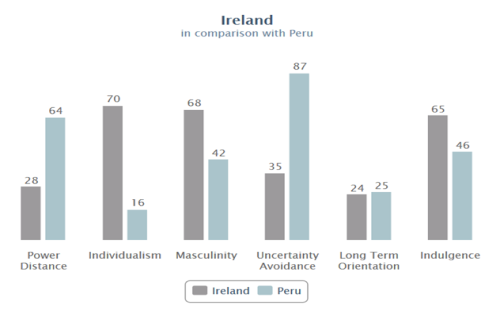
Peru Inflation
.. 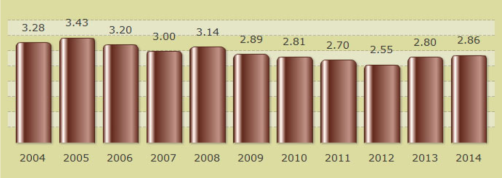
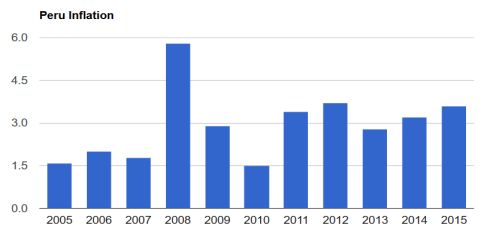
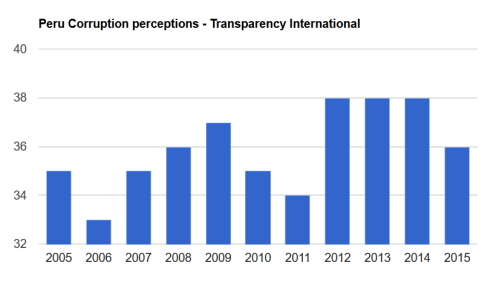
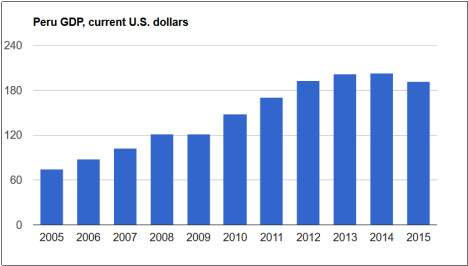
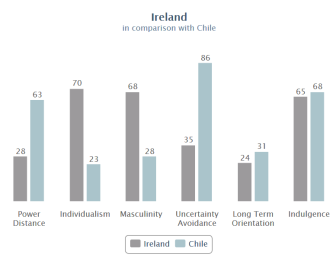
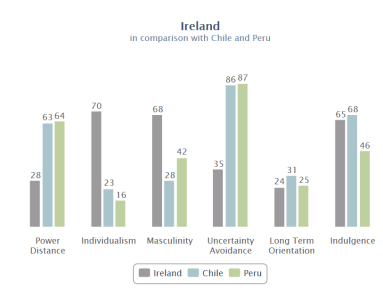
|
Pairwise comparisons for sub-criteria with respect to Economics |
|||||||||
|
GDP growth |
Inflation |
Exchange Rates |
|||||||
|
GDP growth |
1.00 |
6.00 |
5.00 |
0.73170732 |
0.5 |
0.789473684 |
0.673727 |
0.447386678 |
45% |
|
Inflation |
0.17 |
1.00 |
0.33 |
0.12195122 |
0.083333333 |
0.052631579 |
0.085972044 |
0.057089514 |
6% |
|
Exchange Rates |
0.20 |
5.00 |
1.00 |
0.14634146 |
0.416666667 |
0.157894737 |
0.240300956 |
0.15957123 |
16% |
|
1.37 |
12.00 |
6.33 |
|||||||
|
Pairwise comparisons for sub-criteria with respect to Politics |
|||||||||
|
Stability |
Market Economy |
Regulation |
|||||||
|
Stability |
1.00 |
0.17 |
6.00 |
0.13953488 |
0.12195122 |
0.5 |
0.253828701 |
0.067823621 |
7% |
|
Market Economy |
6.00 |
1.00 |
5.00 |
0.8372093 |
0.731707317 |
0.416666667 |
0.661861095 |
0.176850828 |
18% |
|
Regulation |
0.17 |
0.20 |
1.00 |
0.02325581 |
0.146341463 |
0.083333333 |
0.084310204 |
0.022527883 |
2% |
|
7.17 |
1.37 |
12.00 |
1 |
||||||

|
Global |
Very |
Very |
IMS |
|||
|
Priorities |
Unfavourable |
Unfavourable |
Favourable |
Favourable |
Favourability Score |
|
|
GDP growth |
45% |
0 |
0.333 |
0.666 |
1 |
30% |
|
Inflation |
6% |
0 |
0.333 |
0.666 |
1 |
6% |
|
Exchange Rates |
16% |
0 |
0.333 |
0.666 |
1 |
16% |
|
Stability |
7% |
0 |
0.333 |
0.666 |
1 |
7% |
|
Market Economy |
18% |
0 |
0.333 |
0.666 |
1 |
12% |
|
Regulation |
2% |
0 |
0.333 |
0.666 |
1 |
2% |
|
Cultural Similarity |
7% |
0 |
0.333 |
0.666 |
1 |
5% |
|
Total |
77% |
|
Pairwise comparisons among objectives/alternatives |
Normalized matrix |
Weights/ Priorities |
Global Priorities |
|||||
|
Economic |
Political |
Cultural |
||||||
|
Economic |
1.00 |
4.00 |
7.00 |
0.717948718 |
0.774193548 |
0.5 |
0.664047422 |
|
|
To export a reference to this article please select a referencing style below: Give Yourself The Academic Edge Today
Essay Writing Service Essay Writing
| ||||||||


